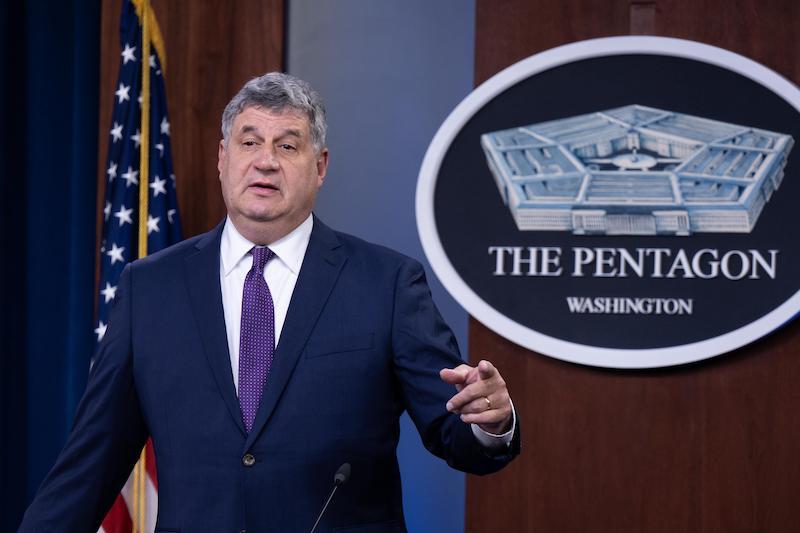
“I think they’re going to figure it out,” says Undersecretary of Defense for Acquisition Bill LaPlante. “It’s not going to stop. It’s going to continue.”
FARNBOROUGH—In the early stages of what was then called the Long-Range Strike Bomber (LRSB), there was uncertainty about the program’s funding and timing.
The Pentagon needed to understand how much it would actually cost and how it would be used operationally before committing to producing what would become the B-21 Raider.
Now, that process is playing out again with the U.S. Air Force’s and U.S. Navy’s next-generation fighter programs, says Bill LaPlante, the Pentagon’s undersecretary of defense for acquisition. Speaking at the Farnborough Airshow here amid constant speculation about what the Air Force will do with its Next Generation Air Dominance (NGAD) platform, LaPlante says the LRSB model is relevant in that the services need to be sure they are buying the right thing before pulling the trigger.
“I think they’re going to figure it out,” he says. “It’s not going to stop. It’s going to continue. It’s just going to be, well, better informed.”
Both NGAD and the Navy’s F/A-XX programs are in a pre-Milestone B phase ahead of awarding a contract for engineering and manufacturing development. Like LRSB, this is when the Pentagon needs to ensure it really needs to continue.
“It can’t be that everything that starts, even before you go into full-scale development, has to continue,” he said in response to a question from Aviation Week. “That would be crazy. On the other hand, you have to provide the stability to the industry, to the warfighter, to continue with your themes and follow through on what you’re going to do.”
Air Force Secretary Frank Kendall told Aviation Week in June that budget pressures and an improved understanding of threats are prompting a rethink of how the service will conduct air superiority in the future. The service had planned to award an engineering and manufacturing development contract this summer for the NGAD platform, with Boeing and Lockheed Martin understood to be competing.
“In the case of what the Air Force and Navy are doing for their next generation, it’s not that they’re not sure,” LaPlante says. “It’s making sure they understand. It’s like the beginning of the B-21, which up until about 2011, we really had to understand—what was the cost point, no kidding, and what are the [concepts of operations].”
While extending the program to do this thinking might introduce uncertainty, that is not the intent, he says—because not doing it “wouldn’t be very smart.
‘I’m confident that the modernization of air power is going to absolutely continue,” he says. “But, it’s going to need to always be assessed in light of the threat. And, of course, the budget.”
It is not clear what the future air superiority programs will be amid the review. LaPlante points to the Air Force’s development of Collaborative Combat Aircraft as a positive modernization effort that is bringing on comparatively cheaper platforms with awards to companies that are not the major defense primes—Anduril and General Atomics Aeronautical Systems Inc. are competing.

Comments